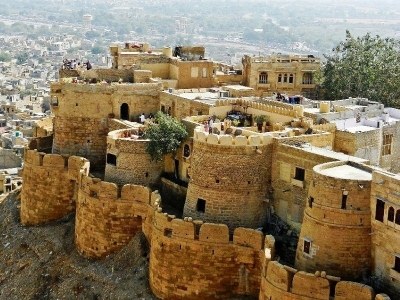
1. A living fort
The Jaisalmer Fort is considered one among the very few living forts in the world. Close to one fourth of Jaisalmer’s population lives inside the fort. When the fort was constructed nearly 850 years ago, the city was the part inside the fort walls. Settlements outside the fort were said to have come up around the 17th Century to accommodate the city’s expanding population.
2. The Golden Fort
The fort walls are built using yellow sandstone, giving it a lion-like colour in the day, which fades to a honey-gold as the sun sets, camouflaging the fort with the surrounding Thar desert. The fort is aptly called Sonar Quila’ or The Golden Fort. As the lights turn on in the night the fort continues to shine like a golden jewel above the city
3. No more an excellent drainage system
The Jaisalmer fort boasted an excellent drainage system in its initial years. The system, called ghut nali, allowed for easy drainage of rainwater away from the fort in all four directions. However, over the years, badly-planned construction activities and building of new roads have reduced the effectiveness of the drainage system. Today, most of the fort has a problem of water seepage.
4. Intricate havelis
Inside the fort one can find palaces, Jain and Hindu temples as well as havelis. Built by wealthy merchants, most of the havelis are constructed using ornate sandstone and are occupied even today. Many of these havelis have several floors and countless rooms with beautifully decorated archways, windows, doors and museums. Patwon ki haveli is the most famous of the lot as it was one of the first havelis to be built in Jaisalmer. Commissioned in the year 1805 by Guman Chand Patwa, this is a cluster of five havelis and is one of the largest in the city.
5. Stay inside Heritage Site
Since it is still occupied by people, the Jaisalmer Fort gives you the opportunity to stay inside a World Heritage Site, one of the very few sites to offer such a chance. There are several hotels as well as guest houses inside the fort where one can find accommodation.
Picture Credit : Google

